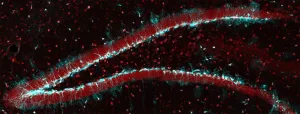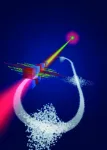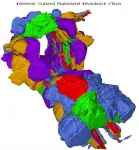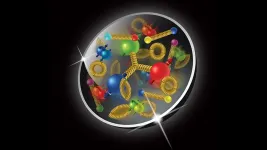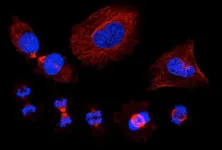Childhood ADHD, risk of developing psychotic disorder
2021-02-24
(Press-News.org) What The Study Did: This study combined the results of 12 studies with 1.8 million participants to examine the association between attention-deficit/hyperactivity disorder (ADHD) in childhood and adolescence and the subsequent risk of developing a psychotic disorder.
Authors: Mikaïl Nourredine, M.D., M.Sc., of the Hospices Civils de Lyon in Lyon, France, is the corresponding author.
To access the embargoed study: Visit our For The Media website at this link https://media.jamanetwork.com/
(10.1001/jamapsychiatry.2020.4799)
Editor's Note: The article includes conflict of interest disclosures. Please see the article for additional information, including other authors, author contributions and affiliations, conflict of interest and financial disclosures, and funding and support.
INFORMATION:
Media advisory: The full study is linked to this news release.
Embed this link to provide your readers free access to the full-text article This link will be live at the embargo time https://jamanetwork.com/journals/jamapsychiatry/fullarticle/10.1001/jamapsychiatry.2020.4799?guestAccessKey=461bc4d5-0c5d-4d02-9da9-f9fbd3c25fcb&utm_source=For_The_Media&utm_medium=referral&utm_campaign=ftm_links&utm_content=tfl&utm_term=022421
ELSE PRESS RELEASES FROM THIS DATE:
2021-02-24
BOSTON (February 24, 2021) - Results of a study published today in JAMA Surgery reveal the impact post-operative delirium has on health care costs in the U.S. Data from the study shows that if delirium were prevented or made less severe for patients, it could reduce health care costs by $33 billion per year, that is, $44,300 per patient per year. Severe delirium resulted in an additional $56,500 per patient per year, as compared to routine health care costs for older post-operative patients.
Tammy Hshieh, M.D., M.P.H., Adjunct Scientist, and Ray Yun Gou, M.A., Data Scientist II, both with the Aging Brain Center in the Hinda and Arthur Marcus Institute for Aging Research at Hebrew SeniorLife, are co-first authors. Sharon K. Inouye, M.D., M.P.H., Director ...
2021-02-24
CHAPEL HILL, N.C.--For the last decade, the U.S. Food and Drug Administration has required tobacco manufacturers and importers to report the levels of harmful and potentially harmful chemicals found in their tobacco products and tobacco smoke. The idea was to educate the public and ultimately to decrease tobacco use, but little research has demonstrated if such information can impact on people's decisions to quit smoking.
A new study from the University of North Carolina at Chapel Hill has found that smokers who saw messages about tobacco chemicals with associated ...
2021-02-24
The stem cells in our brain generate new neurons throughout life, for example in the hippocampus. This region of the brain plays a key role for a range of memory processes. With increasing age, and in patients suffering from Alzheimer's disease, the hippocampus' ability to create new neurons declines steadily - and with it, its memory functions.
Distribution of age-dependent cell damage
A study conducted by the research group of Sebastian Jessberger, a professor at the Brain Research Institute of the University of Zurich, shows how the formation of new neurons is impaired with advancing age. Protein structures in the nuclei of neural stem cells make sure that harmful proteins accumulating ...
2021-02-24
The most modern light sources for research are based on particle accelerators. These are large facilities in which electrons are accelerated to almost the speed of light, and then emit light pulses of a special character. In storage-ring-based synchrotron radiation sources, the electron bunches travel in the ring for billions of revolutions, then generate a rapid succession of very bright light pulses in the deflecting magnets. In contrast, the electron bunches in free-electron lasers (FELs) are accelerated linearly and then emit a single super-bright flash of ...
2021-02-24
Researchers have mapped the physical organization of the brain of a microscopic soil-living nematode worm called Caenorhabditis elegans, creating a new model for the architecture of the animal's brain and how it processes information.
In a surprise twist, they found a large degree of variation in the structure of some neural circuits or pathways in individual worms which complemented a core set of neural circuits common to different animals.
The scientists say the worms' brains might have a lot more in common with larger animals than previously thought.
Created by neuroscientists at the University of Leeds in collaboration with researchers in New York's Albert Einstein College of Medicine, the brain map reveals that ...
2021-02-24
Scientists at the Children's Medical Center Research Institute at UT Southwestern (CRI) have identified the specialized environment, known as a niche, in the bone marrow where new bone and immune cells are produced. The study, published in Nature, also shows that movement-induced stimulation is required for the maintenance of this niche, as well as the bone and immune-forming cells that it contains. Together, these findings identify a new way that exercise strengthens bones and immune function.
Researchers from the Morrison laboratory discovered that forces created from walking or running are transmitted from bone surfaces along arteriolar blood vessels into the marrow inside bones. Bone-forming ...
2021-02-24
A study of spatial learning in mice shows that exposure to new experiences dampens established representations in the brain's hippocampus and prefrontal cortex, allowing the mice to learn new navigation strategies. The study, published in Nature, was supported by the National Institutes of Health.
"The ability to flexibly learn in new situations makes it possible to adapt to an ever-changing world," noted Joshua A. Gordon, M.D., Ph.D., a senior author on the study and director of the National Institute of Mental Health, part of NIH. "Understanding the neural basis of this flexible learning in animals gives us insight into ...
2021-02-24
Asymmetry in the proton confounds physicists, but a new discovery may bring back old theories to explain it.
Symmetry -- displayed in areas ranging from mathematics and art, to living organisms and galaxies -- is an important underlying structure in nature. It characterizes our universe and enables it to be studied and understood.
Because symmetry is such a pervasive theme in nature, physicists are especially intrigued when an object seems like it should be symmetric, but it isn't. When scientists are confronted with these broken symmetries, it's as if they've found an object with a strange reflection in the mirror.
"Nature is leading the way for concepts in older models of the proton to get a second look." -- ...
2021-02-24
UCLA materials scientists and their colleagues have developed a new method to make synthetic biomaterials that mimic the internal structure, stretchiness, strength and durability of tendons and other biological tissues.
The researchers developed a two-pronged process to enhance the strength of existing hydrogels that could be used to create artificial tendons, ligaments, cartilage that are 10 times tougher than the natural tissues. Although the hydrogels contain mostly water with little solid content (about 10% polymer), they are more durable than Kevlar and rubber, which are both 100% polymer. This kind of breakthrough has never been achieved in water-laden polymers until this study, which was recently published in Nature. ...
2021-02-24
With the hope of contributing to the fight against cancer, researchers in Sweden have published a new molecular mapping of proteins that regulate the cell division process - identifying 300 such proteins.
The release of the data, which was published today in the scientific journal, Nature, is significant because it helps bring medical research closer to the point of being able to target specific proteins to treat cancer.
Identifying and understanding what characterizes these proteins is important, says co-author Emma Lundberg, a professor at KTH Royal Institute of Technology whose research group at Science ...
LAST 30 PRESS RELEASES:
[Press-News.org] Childhood ADHD, risk of developing psychotic disorder

